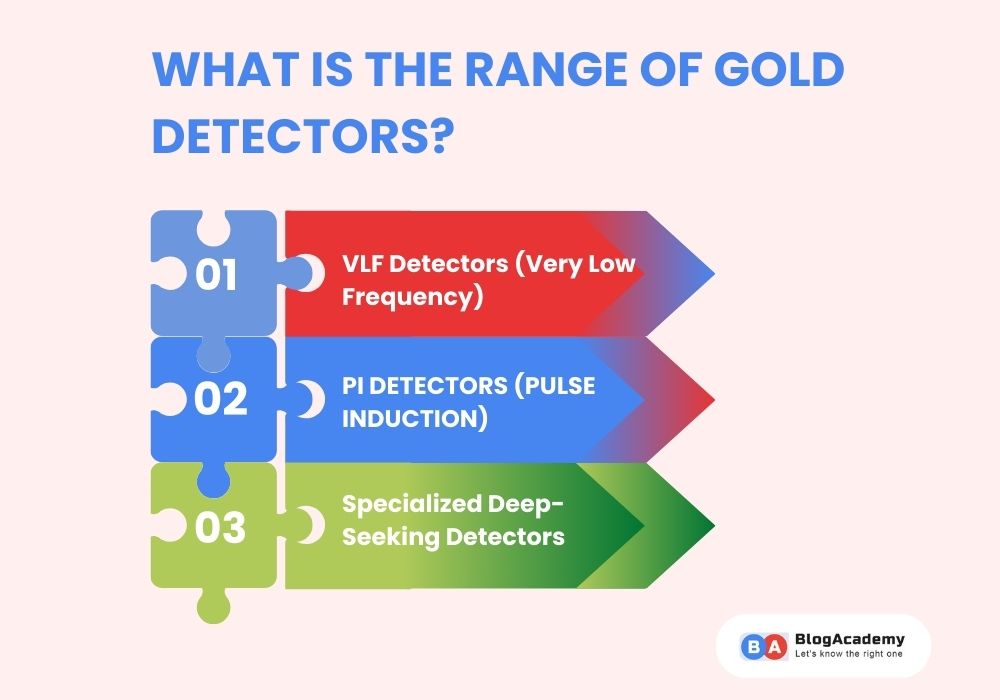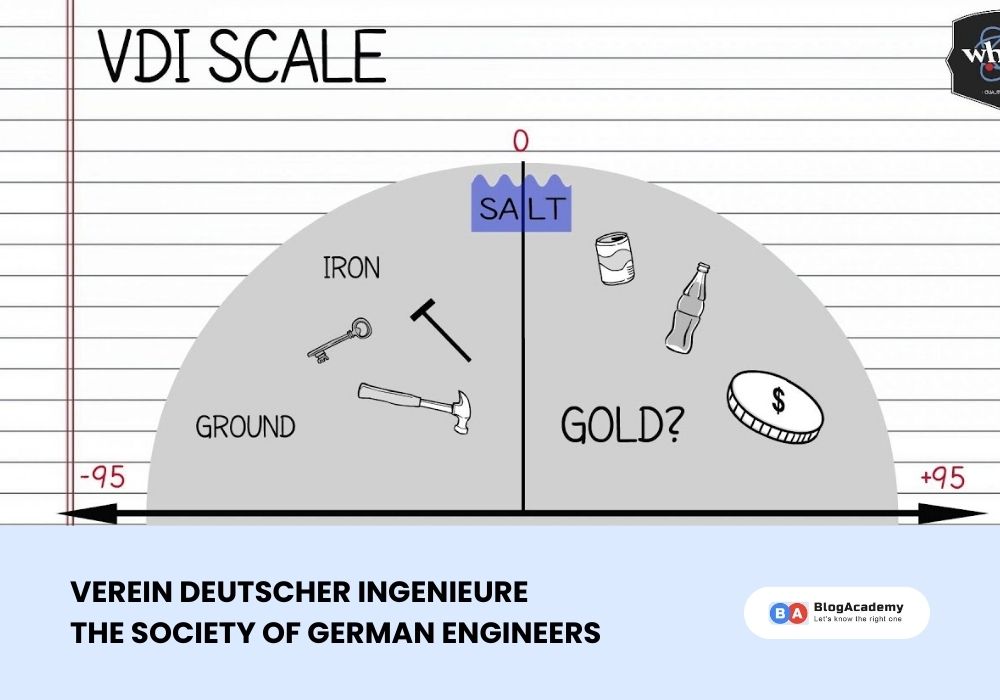Welcome to A Comprehensive Guide: What Number is Gold on a Metal Detector? If you’ve ever tried your hand at metal detecting, you’ll know that different types of metals produce distinct signals on your detector.
Among the most coveted finds for treasure hunters is gold, but identifying it on your metal detector can be a bit tricky. In this concise guide, we will unravel the mystery behind the numeric readings that correspond to gold on your metal detector.
Whether you’re a beginner looking to get started or an experienced detectorist aiming to enhance your skills, this guide will provide you with valuable insights and practical tips to help you distinguish that elusive golden treasure from the rest. Get ready to uncover the secrets of gold detection and elevate your metal-detecting adventures to new heights!
What Number Is Gold on A Metal Detector?
Gold typically registers as a low to mid-range number on a metal detector’s display. In most detectors, it falls within the range of 2 to 5 on the numerical scale. This is because gold is a non-ferrous metal with relatively low conductivity and is often found in small nuggets or flakes.
The lower number indicates its weak electromagnetic response compared to metals like iron or copper, making it a bit trickier to detect. Experienced prospectors know this and use specialized detectors designed for detecting small gold particles.
What does a high number on a metal detector mean?
A high number on a metal detector typically indicates the presence of a highly conductive or large metallic object beneath the surface. Metal detectors emit electromagnetic fields and measure the conductivity and size of objects they encounter. When the detector registers a high number, it suggests a significant metal target, such as a coin, jewelry, or a large piece of buried metal.
For example, if you’re using a metal detector at a beach and get a high reading, it could lead you to discover a valuable gold ring buried in the sand. These high readings are often exciting for treasure hunters and archaeologists, as they may indicate the presence of historically significant artifacts or hidden treasures.
What is the range of gold detectors?

Gold detectors, also known as metal detectors designed specifically for locating gold, have varying ranges depending on their type and technology. Here’s a brief overview:
- VLF Detectors (Very Low Frequency):
- Range: Typically up to 12 inches (30 centimeters).
- Suitable for small to medium-sized gold nuggets and shallow depths.
- PI Detectors (Pulse Induction):
- Range: Can detect gold at greater depths.
- Suitable for both small and larger gold nuggets.
- The range can vary widely depending on the specific model and settings.
- Specialized Deep-Seeking Detectors:
- Range: These advanced detectors can detect gold at depths ranging from several feet to over a hundred feet.
- Ideal for prospectors and treasure hunters searching for deep-buried gold deposits.
It’s essential to choose the right type of gold detector based on your specific needs and the depth at which you expect to find gold. Advanced detectors may provide greater depth capabilities but are often more expensive.
The range factors of gold detectors
It’s important to note that the depth or range of a gold detector is not a fixed value and can vary depending on various factors:
- Target Size: Larger gold nuggets are generally detectable at greater depths compared to smaller ones.
- Soil Conditions: The mineral composition and conductivity of the soil can greatly affect a detector’s range. Highly mineralized or salty soils can reduce the range of a detector.
- Coil Size and Type: The size and type of the search coil on the detector can influence its range. Larger coils are typically better at detecting deeper targets, but they may sacrifice sensitivity to smaller objects.
- Detector Quality: The quality and sensitivity of the detector itself play a significant role in its range. High-end, specialized gold detectors tend to have better depth capabilities.
- Environmental Interference: External factors like electromagnetic interference or nearby power lines can affect a detector’s performance.
What frequency is best for gold?
The best frequency for gold detection is typically in the range of 30 kHz to 70 kHz for metal detectors. Here’s a brief explanation:
- Frequency Range: Gold detection is most effective in the 30 kHz to 70 kHz frequency range.
- Sensitivity: Higher frequencies enhance sensitivity to small gold targets.
- Signal Penetration: Lower frequencies can penetrate deeper into the ground but may miss smaller gold items.
- Target Size: 48 kHz is a common choice as it balances sensitivity and depth, suitable for various gold sizes.
- Ground Mineralization: Frequency selection may depend on the mineralization level of the soil, with higher frequencies better for mineralized ground.
- Gold Prospecting: Miners and hobbyists often choose detectors with adjustable frequencies to adapt to specific conditions.
The VDI Scale: Assigning Numbers to Metals

To simplify metal detection, many modern detectors utilize a Visual Display Indicator (VDI) scale, assigning numerical values to different metals based on their conductivity and other characteristics. Each metal, including gold, has a unique VDI number associated with it.
The VDI scale usually spans from -95 to +95, with negative values indicating iron-based materials and positive values representing non-ferrous substances. Gold, being non-ferrous with high conductivity, typically registers on the positive side of the VDI scale.
The specific VDI number for gold can vary depending on the detector’s make and model. In some detectors, pure gold may read between +70 and +90 on the VDI scale, while in others, it might fall within the +40 to +60 range.
It’s essential to note that the exact VDI number for gold can fluctuate based on factors like gold’s purity, size, shape, and the detector’s settings. Therefore, it’s vital to consult your metal detector’s manual to understand its interpretation of gold signals.
Do All Metal Detectors Detect Gold?
Not all metal detectors are created equal when it comes to detecting gold. Here’s why:
- Metal Composition: Gold is a non-ferrous metal, meaning it doesn’t contain iron. Many basic metal detectors primarily focus on iron and steel, making them less sensitive to gold.
- Frequency Matters: Gold detectors operate at higher frequencies than standard detectors, making them more adept at picking up the small, low-conductive particles of gold.
- Coil Size: The size of the detector’s coil also plays a role. Smaller coils are better at pinpointing small gold nuggets, while larger ones are more suited for larger, deep targets.
- Ground Conditions: The mineralization of the soil can affect a detector’s performance. Gold detectors are often equipped with features to handle these variations.
While many metal detectors can find gold, specialized gold detectors are more efficient due to their frequency, coil size, and adaptability to various ground conditions.
Can metal detectors detect pure gold?
Yes, metal detectors can detect pure gold. Gold is an excellent conductor of electricity, making it easily detectable by metal detectors. When a metal detector emits an electromagnetic field, it induces electrical currents in the metal object, including pure gold, which then generates a signal detected by the device. However, the size and shape of the gold object can influence the detection depth and accuracy of the metal detector.
Can a metal detector detect 24k gold?
Yes, a metal detector can detect 24k gold because gold is a highly conductive metal. Metal detectors work by sending an electromagnetic field into the ground and measuring the conductivity of objects it encounters. Since 24k gold is pure gold and has excellent conductivity, it can be easily detected by metal detectors. However, the detector’s sensitivity and settings can affect its ability to detect small or deeply buried gold items.
Conclusions
In conclusion, the question “What number is gold on a metal detector?” highlights the significance of understanding the unique electromagnetic properties of gold. While gold does not have a fixed number of metal detectors due to variations in equipment and settings, its distinctive conductivity and susceptibility to detection make it a sought-after target for treasure hunters and prospectors. Ultimately, the pursuit of this precious metal exemplifies the enduring fascination with gold’s allure and value throughout history.



